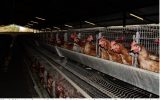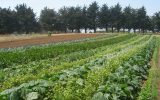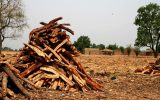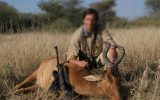The De-bushing Advisory Service (DAS), a division of the Namibia Biomass Industry Group (N-Big) has developed two industry tools namely Biomass Quantification Tool (BQT) and the Bush Feed Formulation Application (FFA). The advisory service works closely with the sector to identify and tackle some of the key challenges of bush encroachment for the purposes of achieving sustainable bush control and biomass utilisation.
The two tools were developed with the support from the Ministry of Environment, Forestry and Tourism and Deutsche Gesellschaft für Internationale Zusammenarbeit (GIZ) Bush Control and Biomass Utilisation Project. The tools aim to promote best practice in the biomass industry through sustainable harvesting and biomass utilisation in Namibia.
The Director of Forestry, Mr Joseph Hailwa officially launched the two new bush biomass industry tools, at the NUST Hotel School, in Windhoek. During the launch, Hailwa urged farmers and those involved in the biomass industry to make use of the developed products. “Much money has been spent on the development of the products, hence they must be utilised and used”, said Hailwa.
During the launch, Progress Kashandula CEO of Namibia Biomass Industry Group revealed that the Namibia Biomass Industry consumes an estimate close to about 1.8 million tons of biomass per annum. This is achieved through charcoal, firewood, bush feed and other biomass features. Progress further revealed that in 2019/20, charcoal was able to contribute close to about 830 million Namibian dollar through export.
It is estimated that, about 45 million hectares of land in Namibia is bush encroached. With an excess number close to about 10 tons per hectare and this translates into an excessive potential biomass of close to about 550 million tons. This biomass represent a very positive opportunity for the country.
Restoring bush encroached areas through the sustainable removal (harvesting/thinning) of the woody species will result in improved carrying capacity for livestock production and improved biodiversity thereby yielding a more balanced rangeland ecosystem. However, the correct quantification methods are essential for good decision making on bush biomass utilisation. Due to lack of standardised quantification methods, woody biomass assessments are currently done through unknown methods across Namibia. DAS has thus developed the Biomass Quantification Tool (BQT), a standardised model that is easy to use and very specific for the estimation of woody biomass in Namibia.
The model does not only provide estimations on wood and bush feed biomass, but can also be used for general surveys needed to determine, plant densities in areas where woody plant thickening is not a problem or where there is no intention to harvest bush, depending on the measurement option chosen.
Given the frequent droughts in the country, there has been increasing number of farmers producing bush-to-feed and a higher number of them are willing to venture into bush-to-feed production enterprises. However, it must be stressed that bush-based animal feed production is complex and if implemented wrongly, the health and life of animals are at stake. Furthermore, farmers lack knowledge on feed formulation which could help them produce more cost effective, safe and nutritious bush-feed rations using different locally available and affordable ingredients.
As a result, DAS has developed a web- based Bush Feed Formulation Application (FFA) which is a solution for bush feed producers. The FFA is aimed at providing affordable and nutritional balanced rations, lowering the risks posed to animals when the bush feed is formulated on a trial and error basis.
The FFA software will serve as a catalyst to extension services, responsible for rolling out sustainable bush control and biomass utilisation related outreach programmes for farmers.
Both the FFA and BTQ will serve as a catalyst to extension services, responsible for promoting good practices in the biomass sector.




















